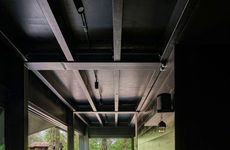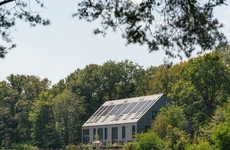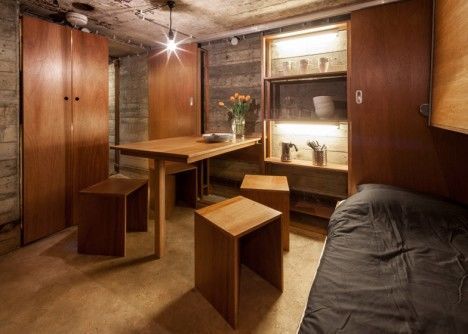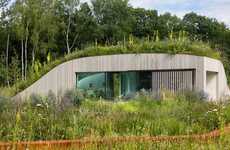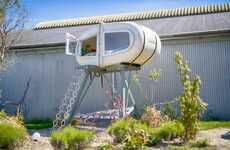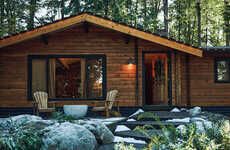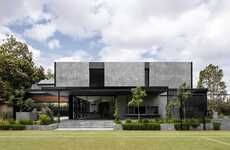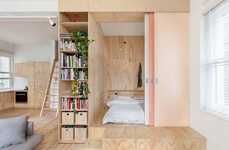
The Bunker Pavilion is a Reclaimed Refuge with Contemporary Comforts
Amelia Roblin — January 6, 2015 — Art & Design
You'd likely curious about the Bunker Pavilion the moment that you approach it. It presents itself as a pretty typical looking subterranean shelter; however, adjacent to the weather-worn concrete entryway, there is a delightful deck that looks quite out of place.
The reason for this arrangement is because the wartime refuge has been converted into a fully functional and quite comfortable vacation home, complete with a contemporary kitchen and bunk beds to sleep four people. Warm wood was used to construct custom furnishings that make the most of the close-packed space. The Bunker Pavilion was initially created as a design stunt, but the B-ild project is now available for rent by guests to this part of rural Netherlands. Just think about the potential for adapting all sorts of abandoned structures such as this.
The reason for this arrangement is because the wartime refuge has been converted into a fully functional and quite comfortable vacation home, complete with a contemporary kitchen and bunk beds to sleep four people. Warm wood was used to construct custom furnishings that make the most of the close-packed space. The Bunker Pavilion was initially created as a design stunt, but the B-ild project is now available for rent by guests to this part of rural Netherlands. Just think about the potential for adapting all sorts of abandoned structures such as this.
Trend Themes
1. Adaptive Reuse - The trend of converting abandoned structures into functional and comfortable spaces presents disruptive innovation opportunities for the real estate industry.
2. Micro-accommodations - The trend of creating compact and efficient living spaces opens up disruptive innovation opportunities for the hospitality industry to cater to travelers seeking unique and experiential accommodation options.
3. Sustainable Architecture - The trend of repurposing and refurbishing existing structures promotes sustainable design practices and offers disruptive innovation opportunities for the construction and architecture industries.
Industry Implications
1. Real Estate - The real estate industry can explore opportunities in adaptive reuse projects to transform unused structures into desirable living or working spaces, catering to emerging market demands.
2. Hospitality - The hospitality industry can capitalize on micro-accommodations by creating innovative and compact spaces that appeal to travelers seeking unique and memorable experiences.
3. Construction - The construction industry can embrace sustainable architecture practices to repurpose and refurbish existing structures, aligning with the growing demand for environmentally conscious solutions.
5.5
Score
Popularity
Activity
Freshness




